Facebook
Twitter
WhatsApp
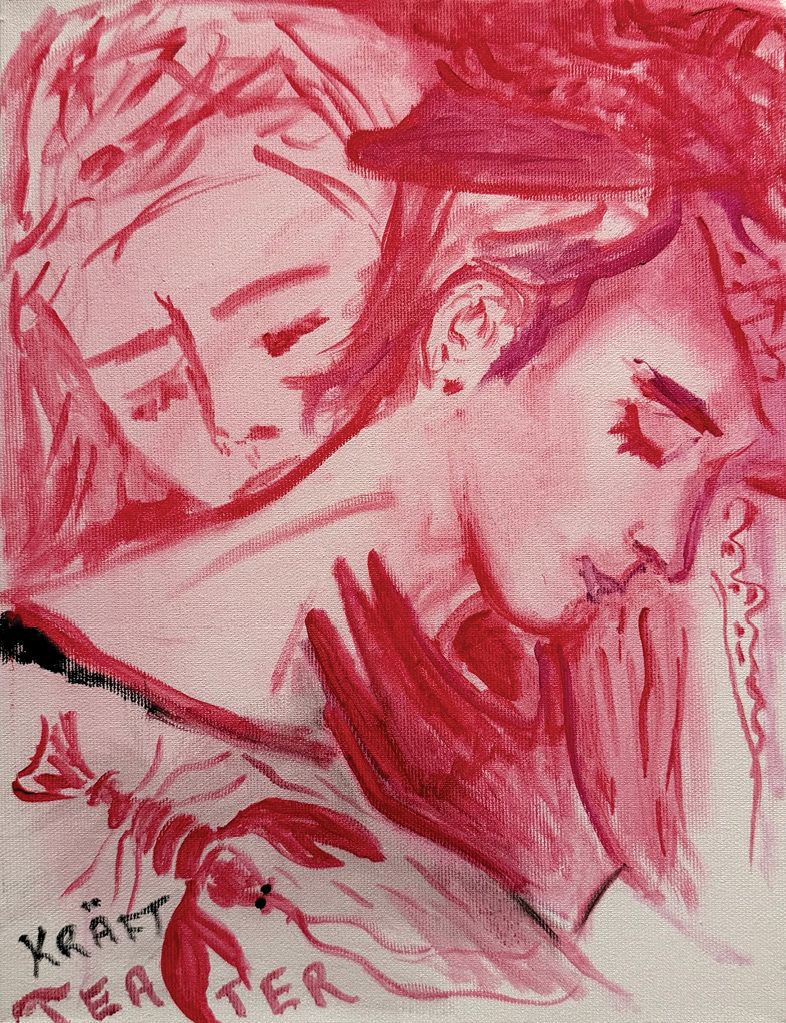
Emily Sundblad
Vampyr I (Embrace)
2025
Oil on canvas
35 × 27 cm (13 3/4 × 10 5/8 in.)
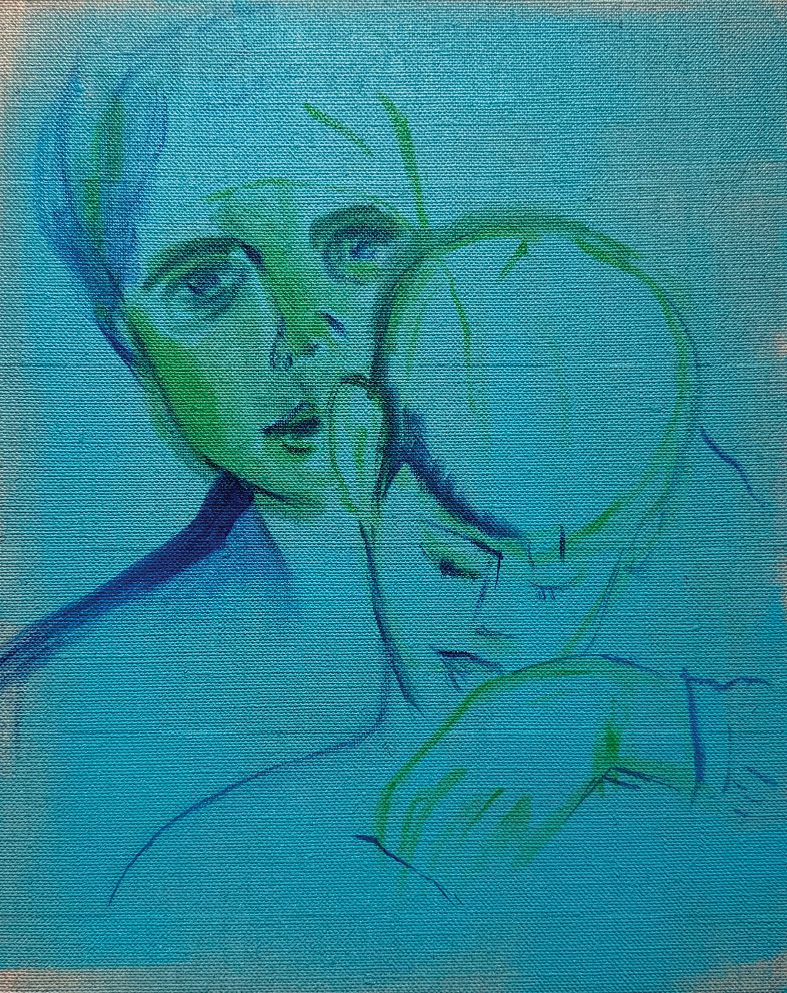
Emily Sundblad
Vampyr II (Embrace)
2025
Oil on canvas
41 × 33 cm (16 1/8 × 13 in.)
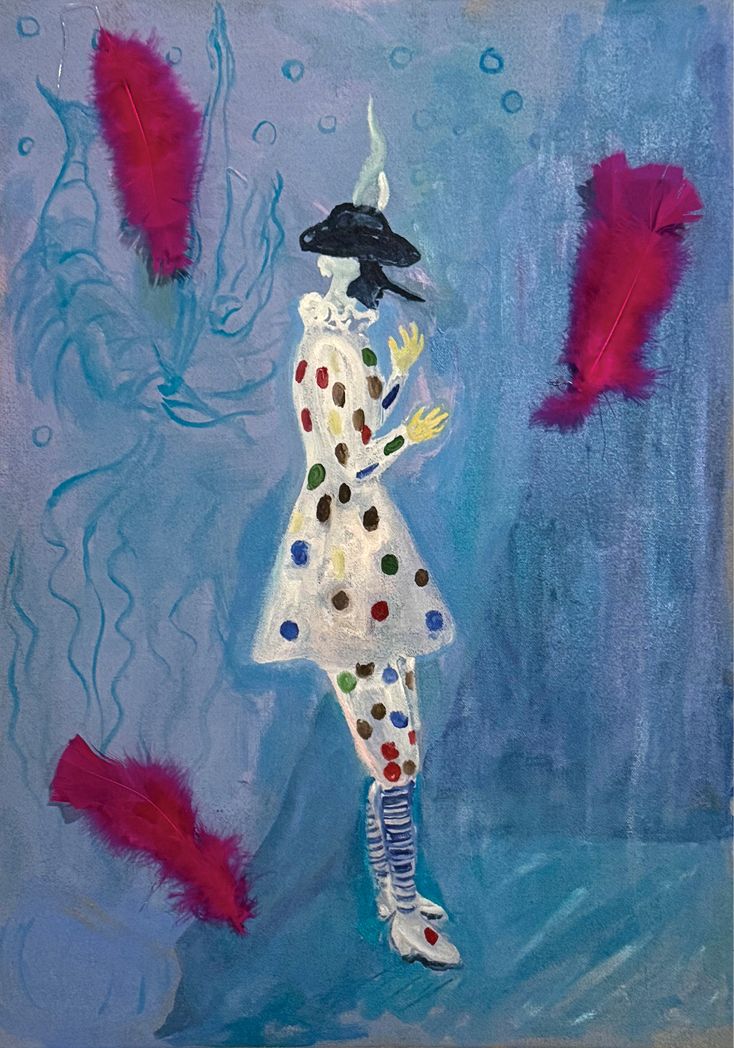
Emily Sundblad
Pantalone
2025
Oil on canvas, feathers
65 × 46 cm (25 5/8 × 18 1/8 in.)
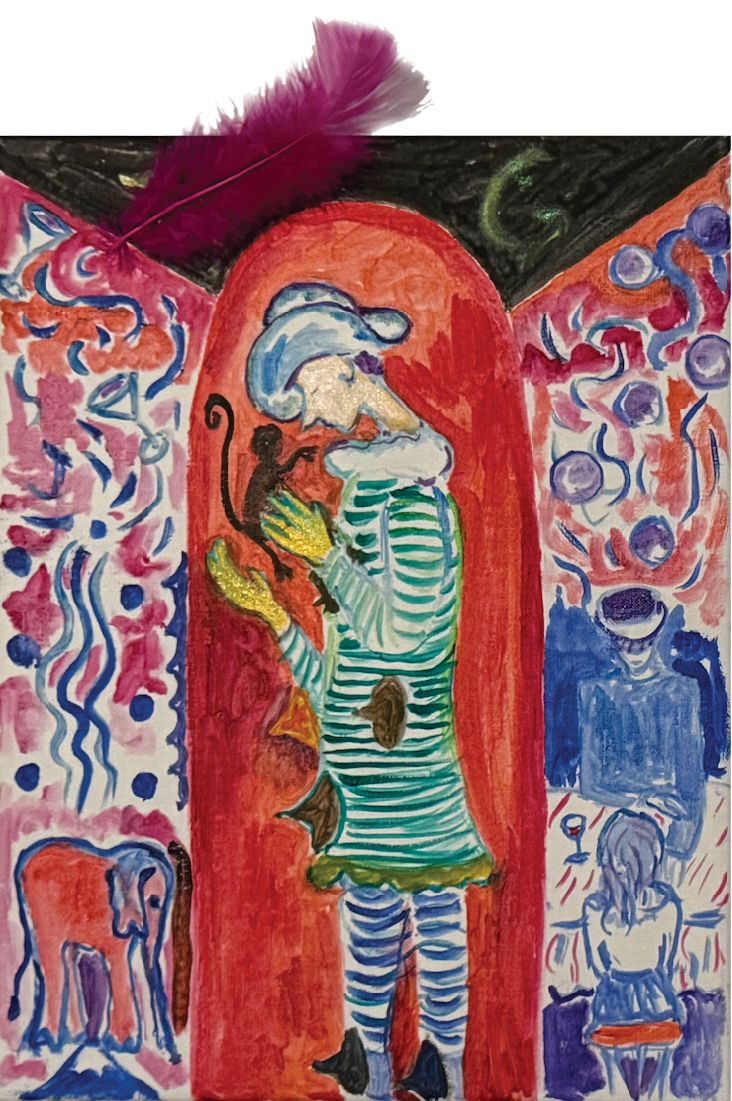
Emily Sundblad
Pulcinella
2025
Oil on canvas, feather
35 × 25 cm (13 3/4 × 9 7/8 in.)
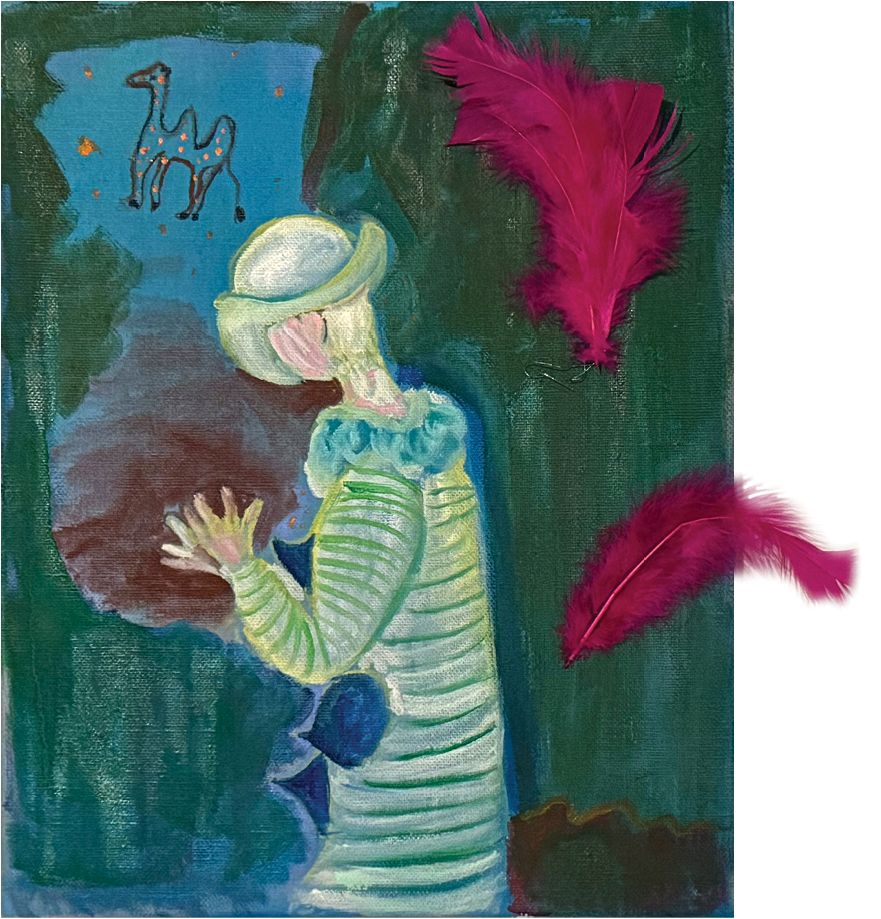
Emily Sundblad
Isabella
2025
Oil on canvas, feathers
41 × 33 cm (16 1/8 × 13 in.)
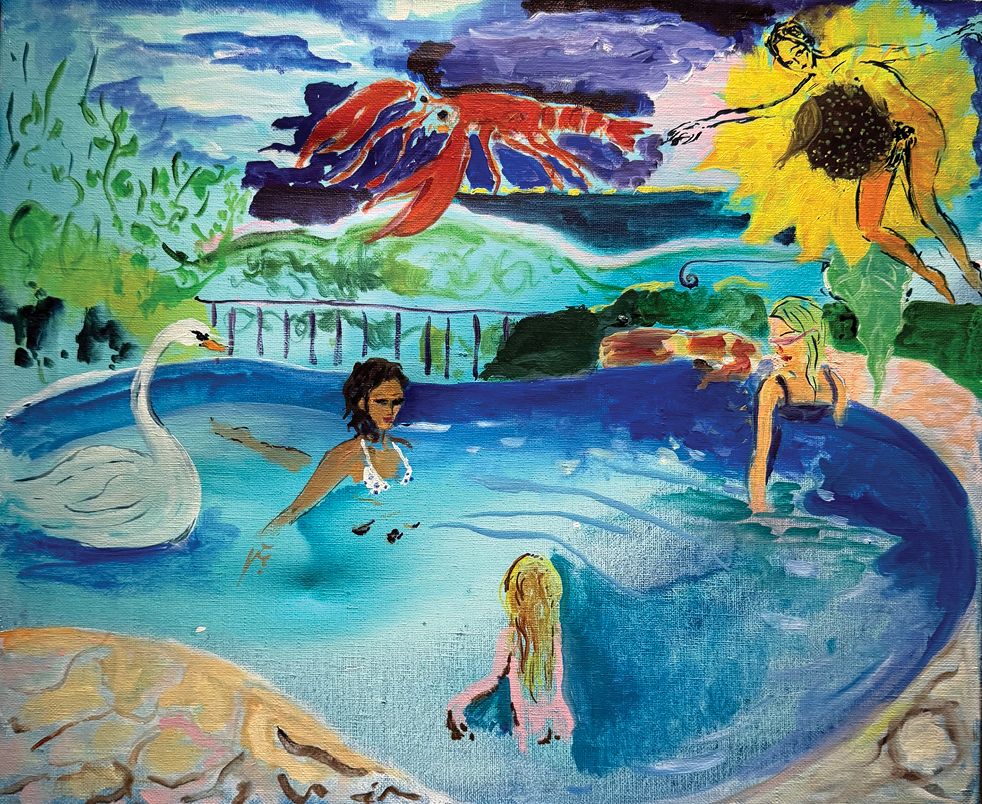
Emily Sundblad
Kräftparadiset
2025
Oil on canvas
38 × 46 cm (15 × 18 in.)
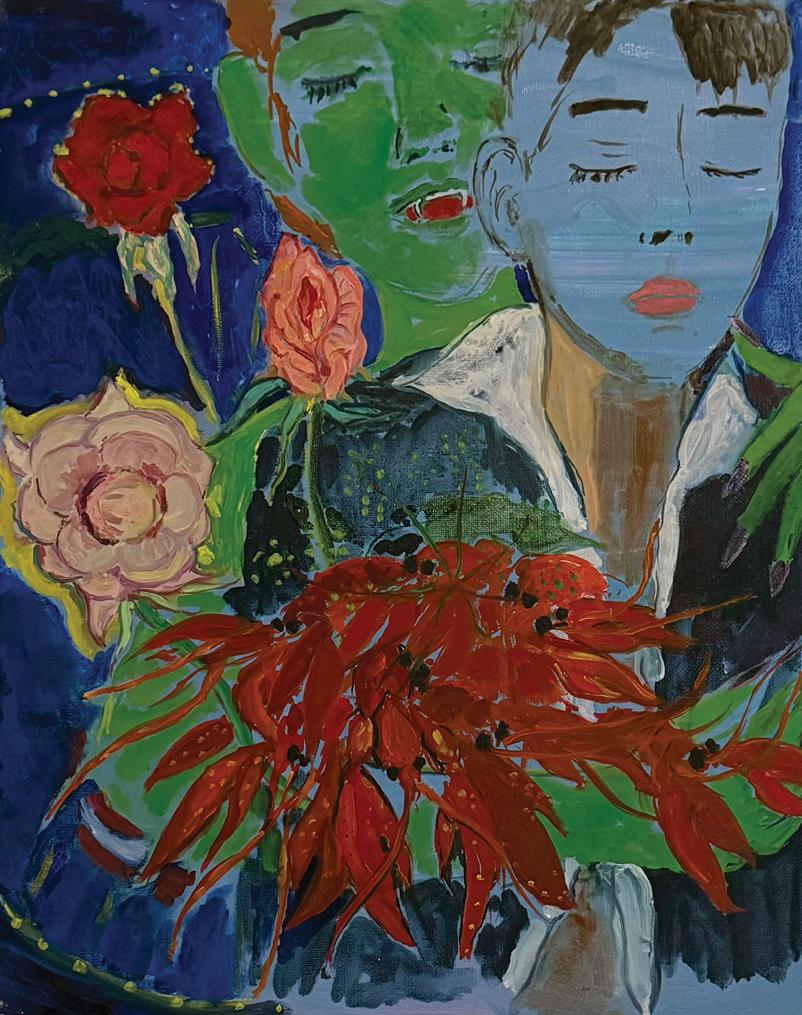
Emily Sundblad
Kräftvampyr I
2025
Oil on canvas
46 × 38 cm (18 1/8 × 15 in.)

Emily Sundblad
Kräftvampyr II
2025
Oil on canvas
41 × 33 cm (16 1/8 × 13 in.)
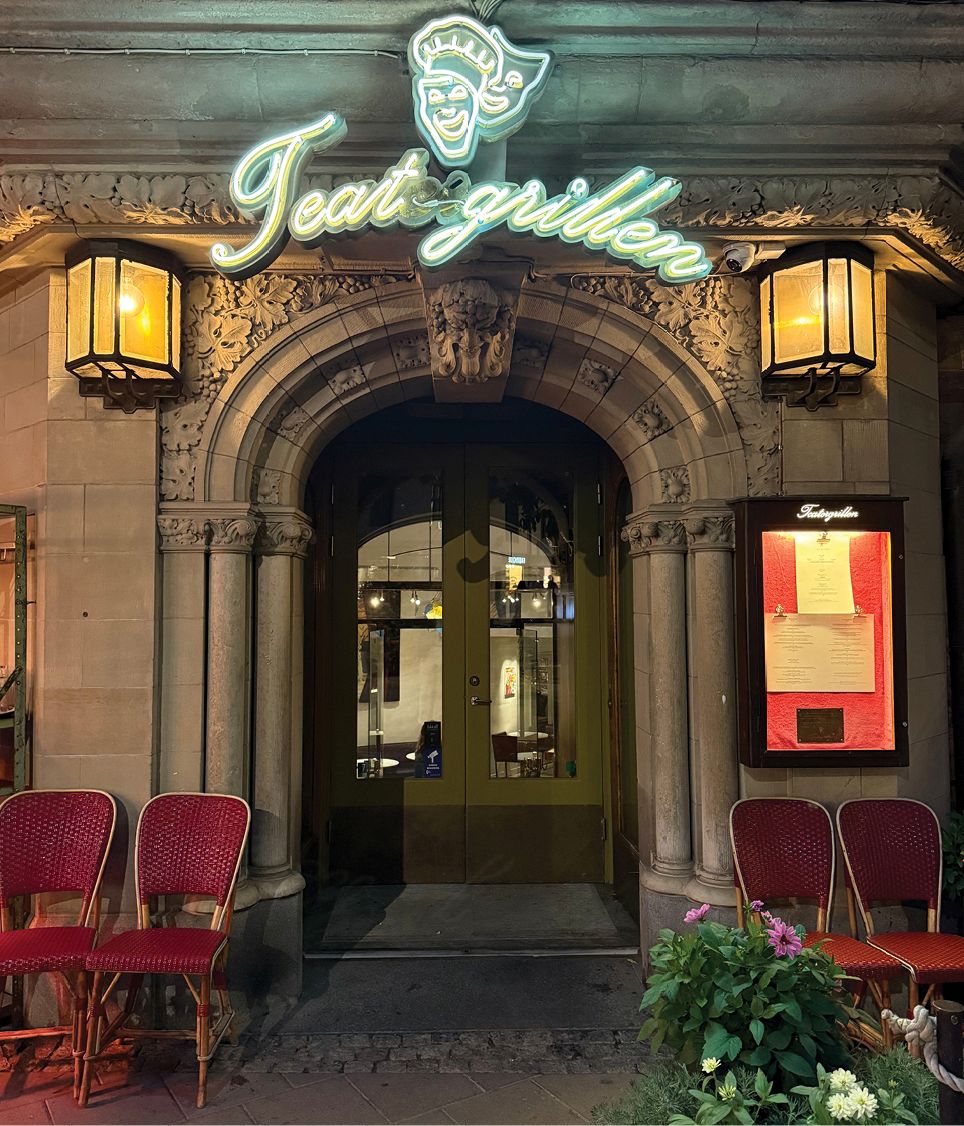
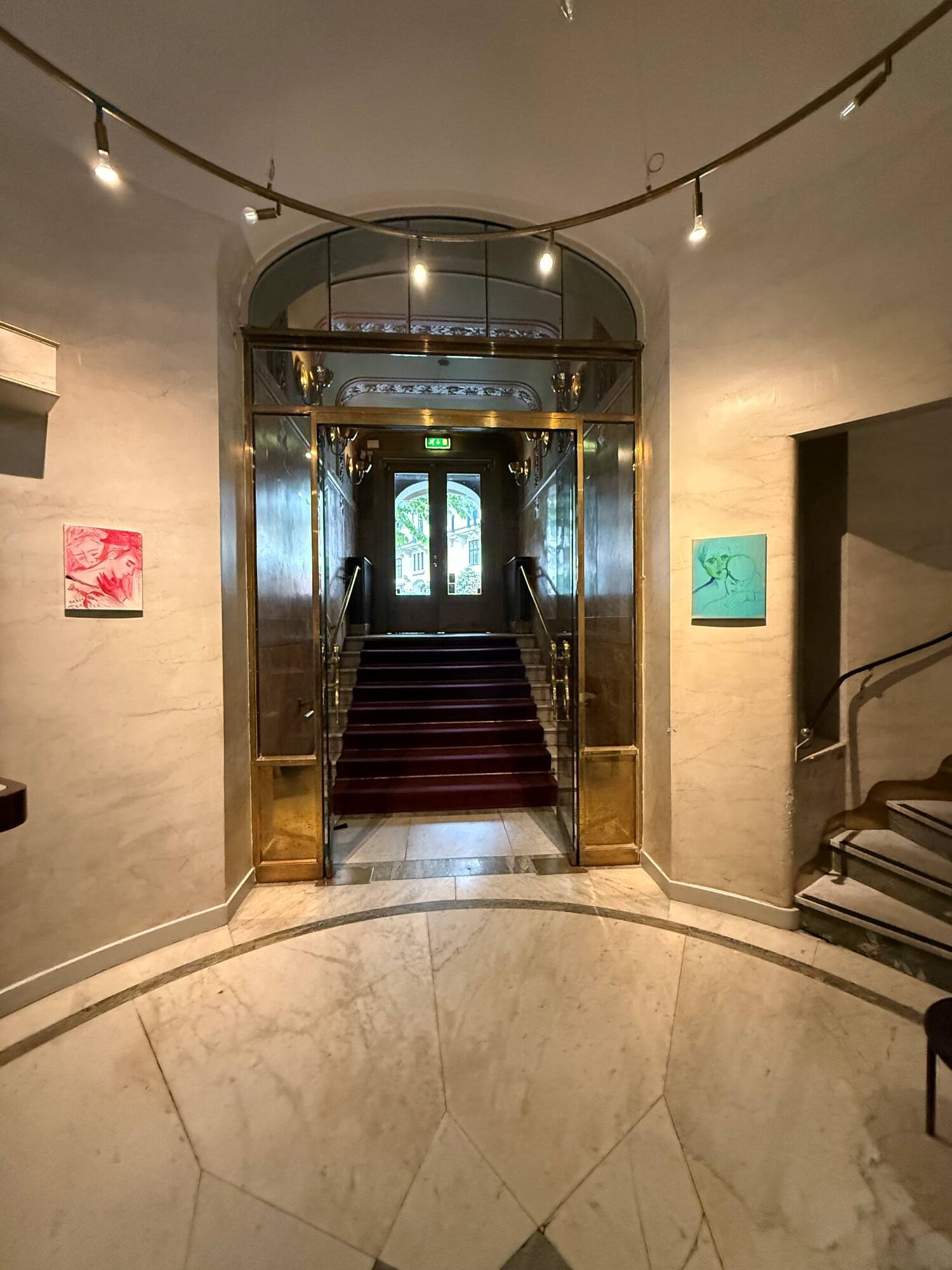

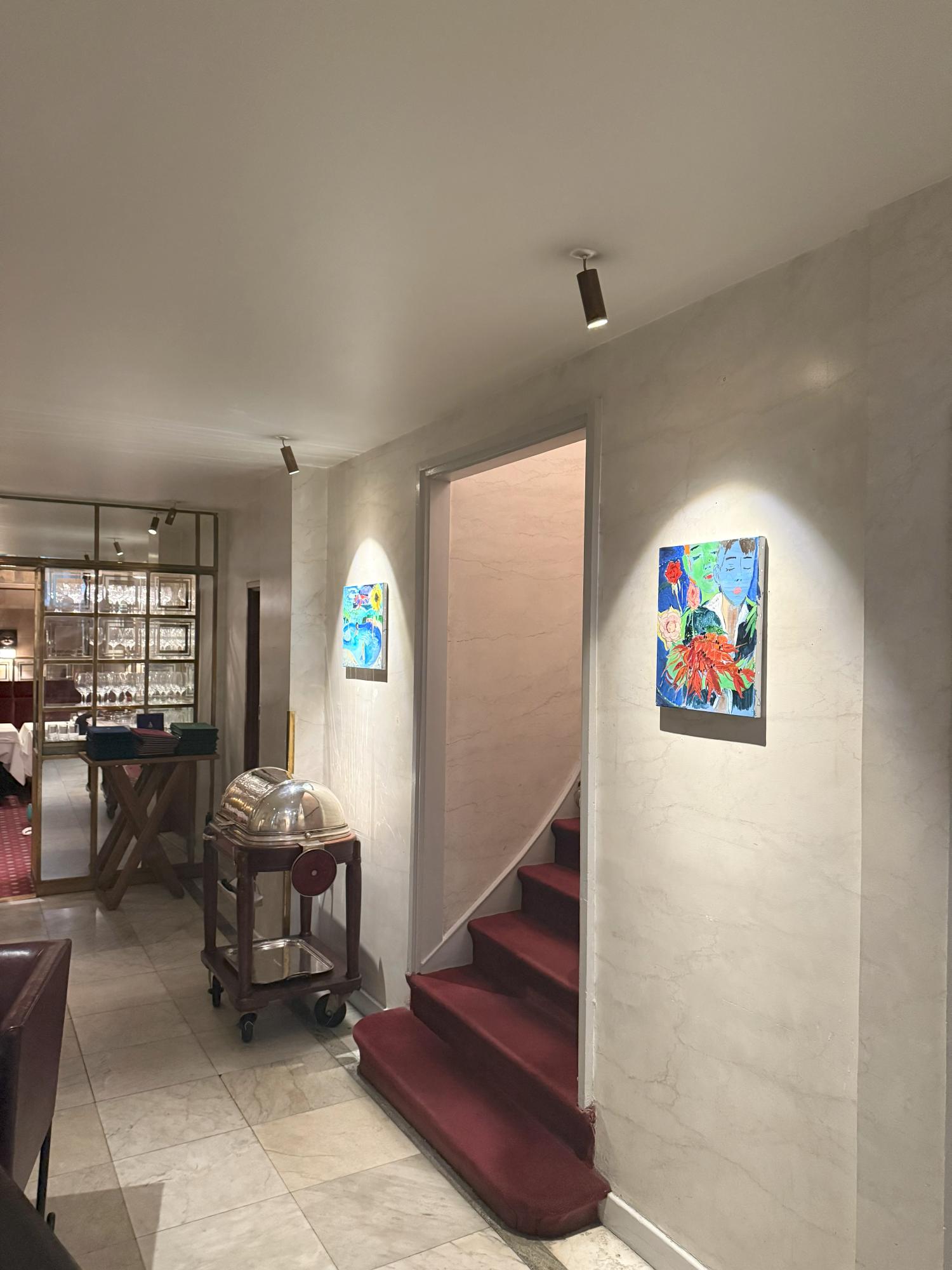
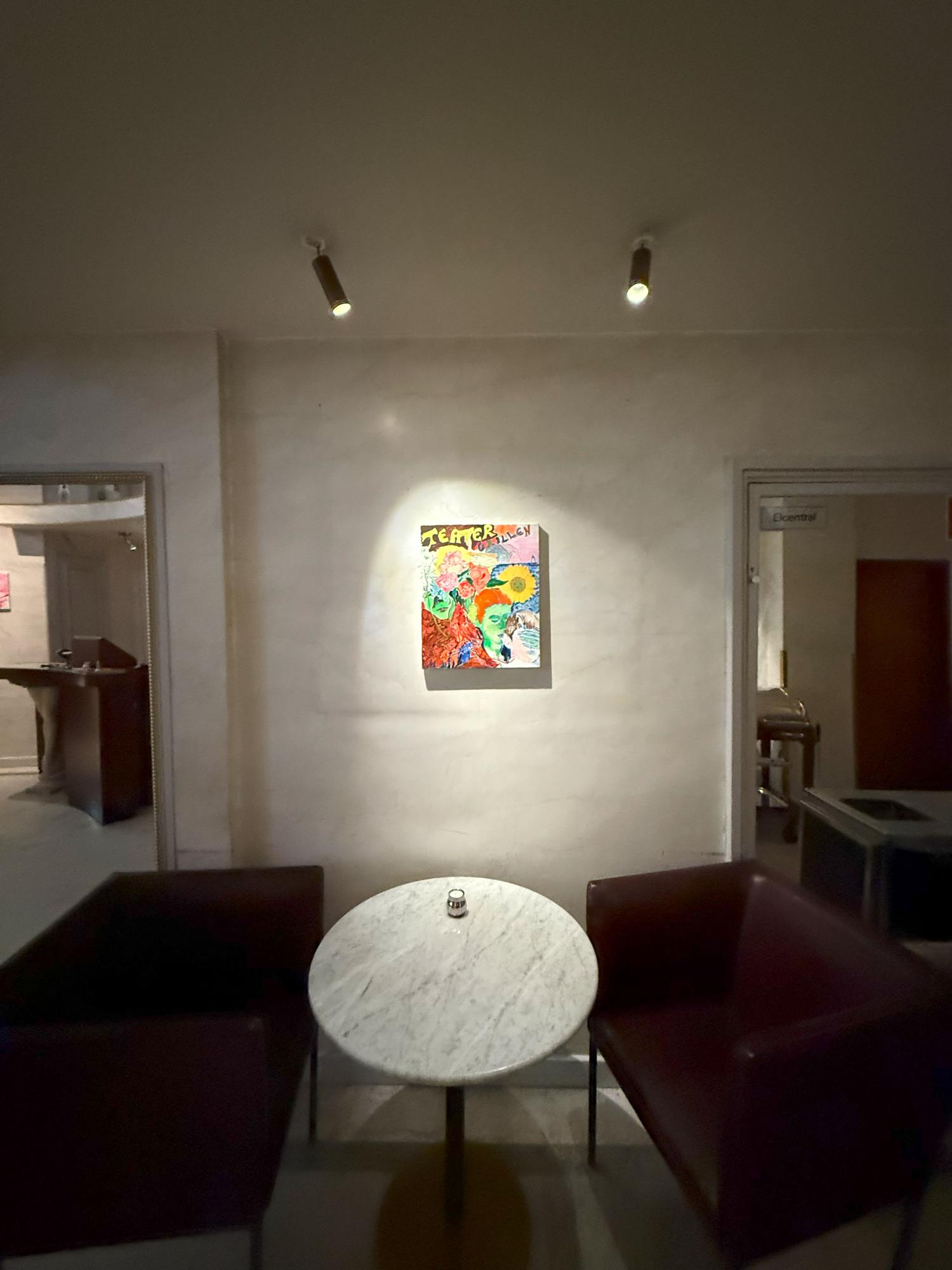
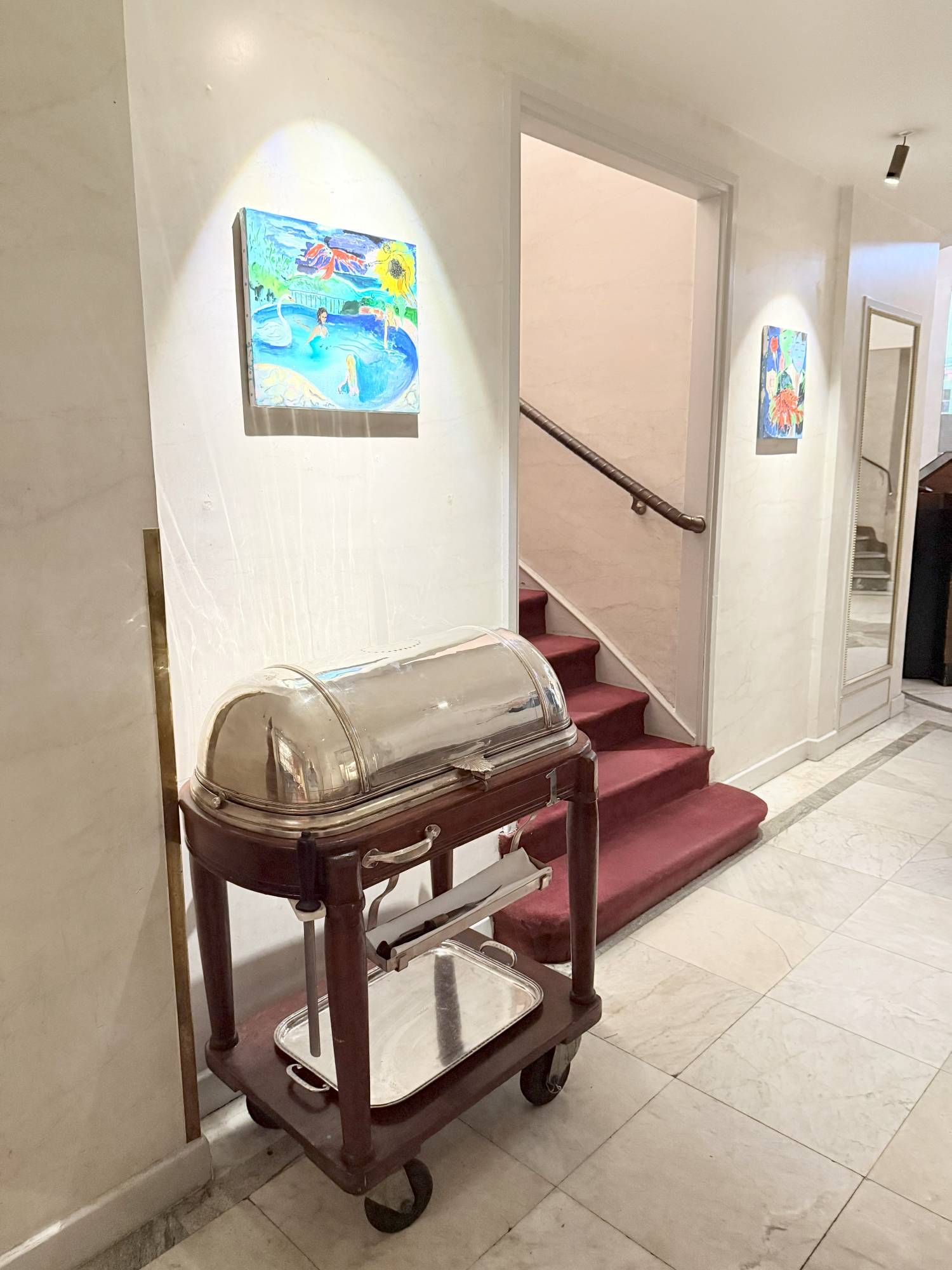
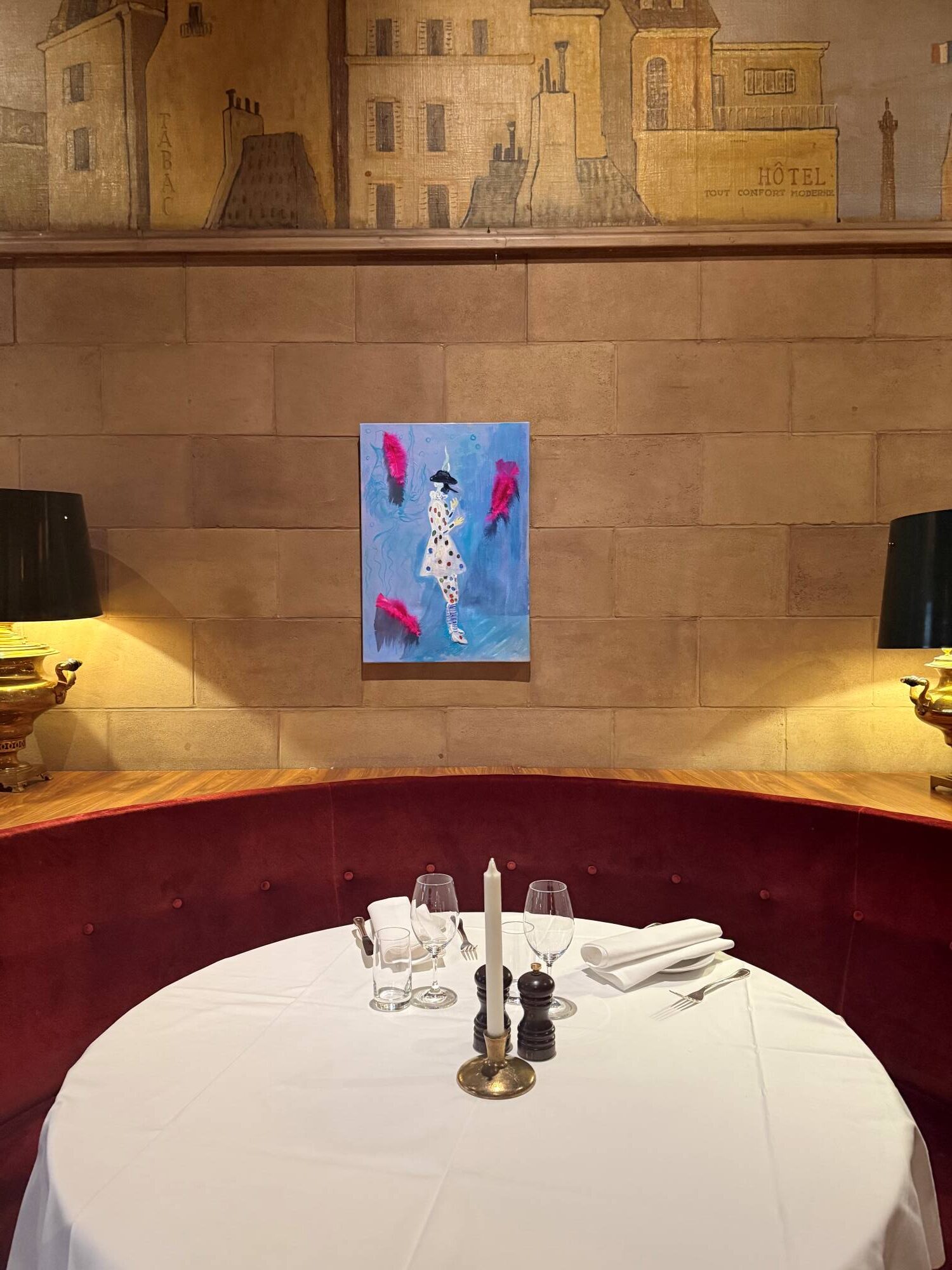

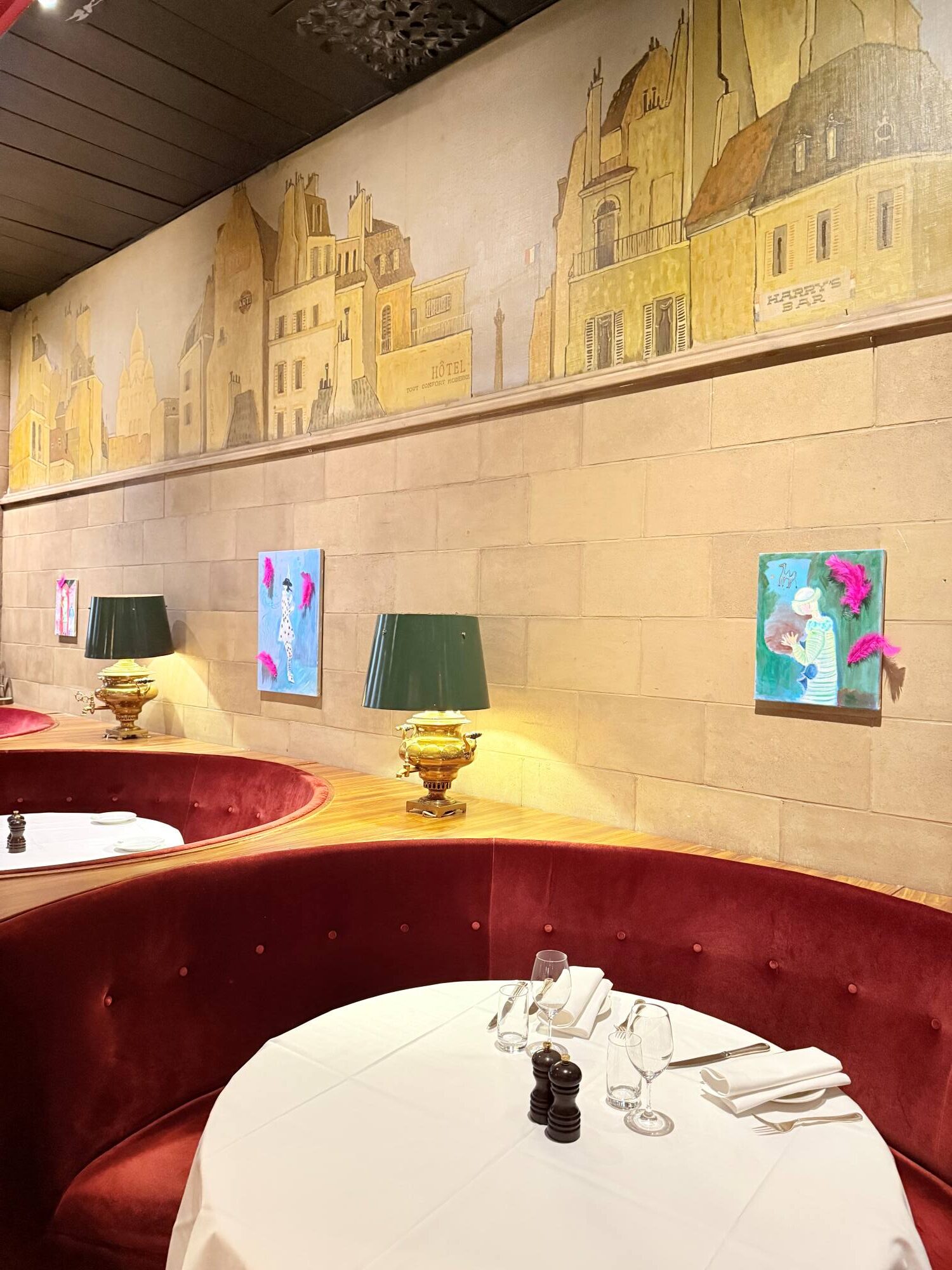
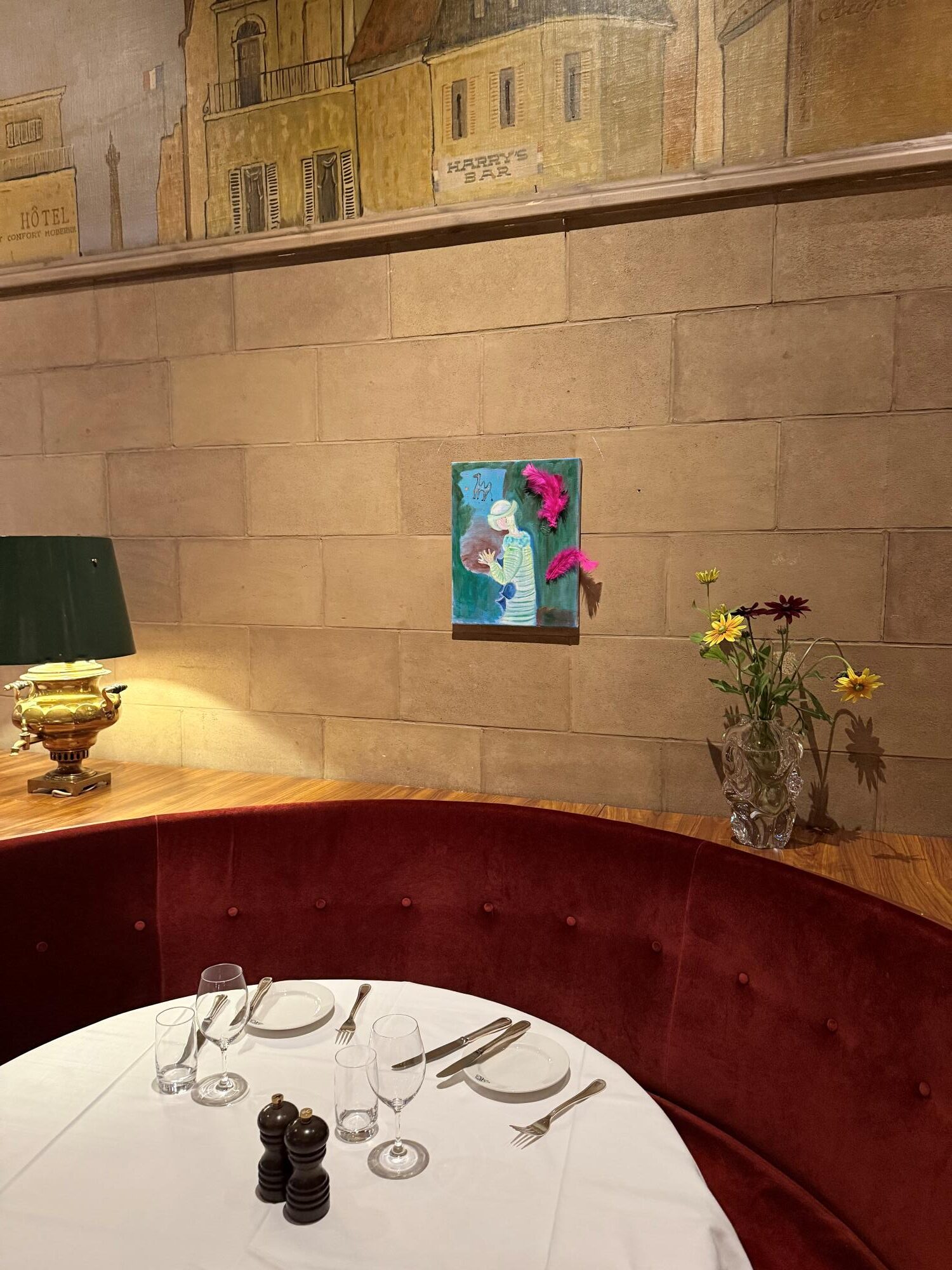
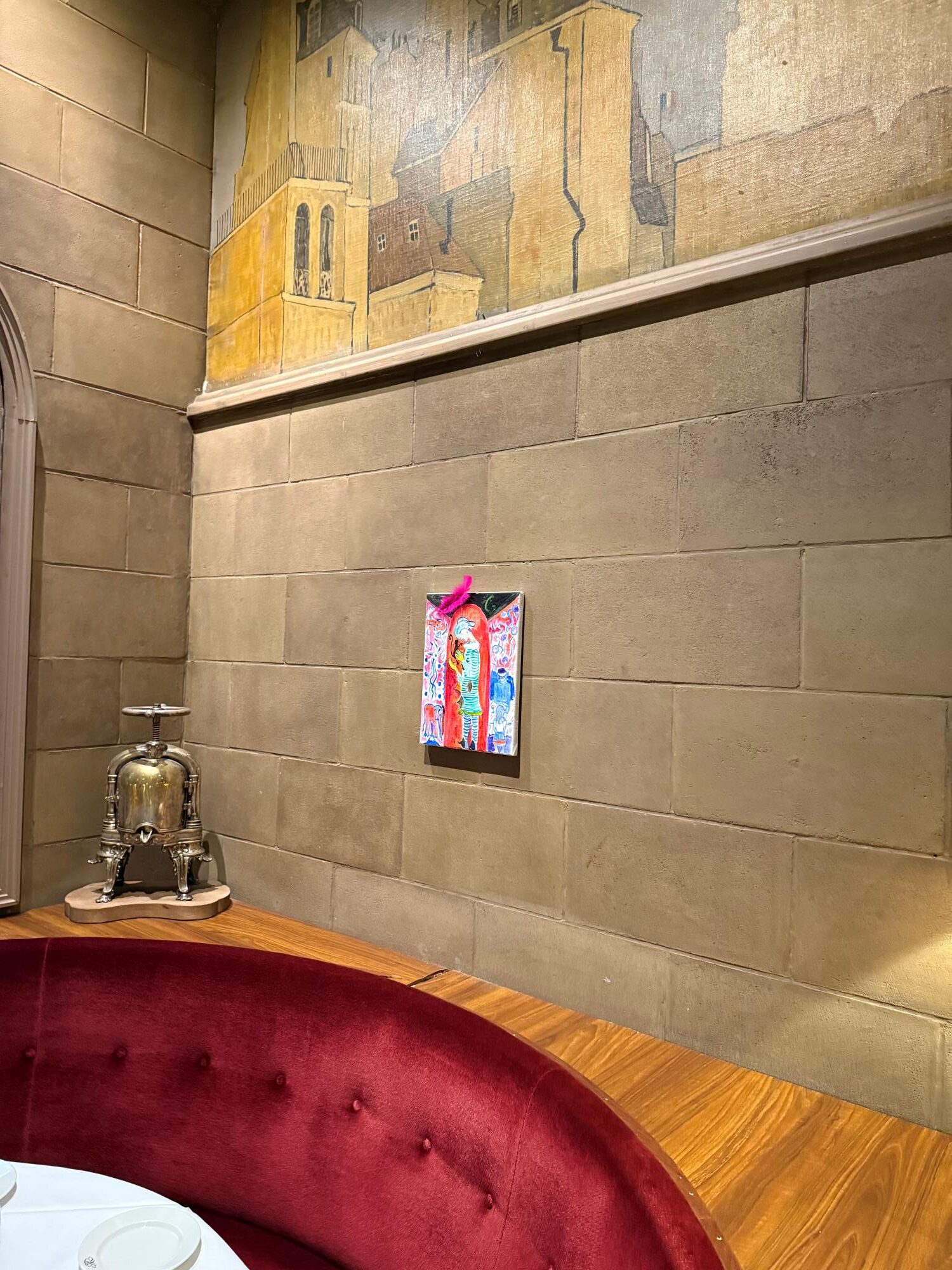
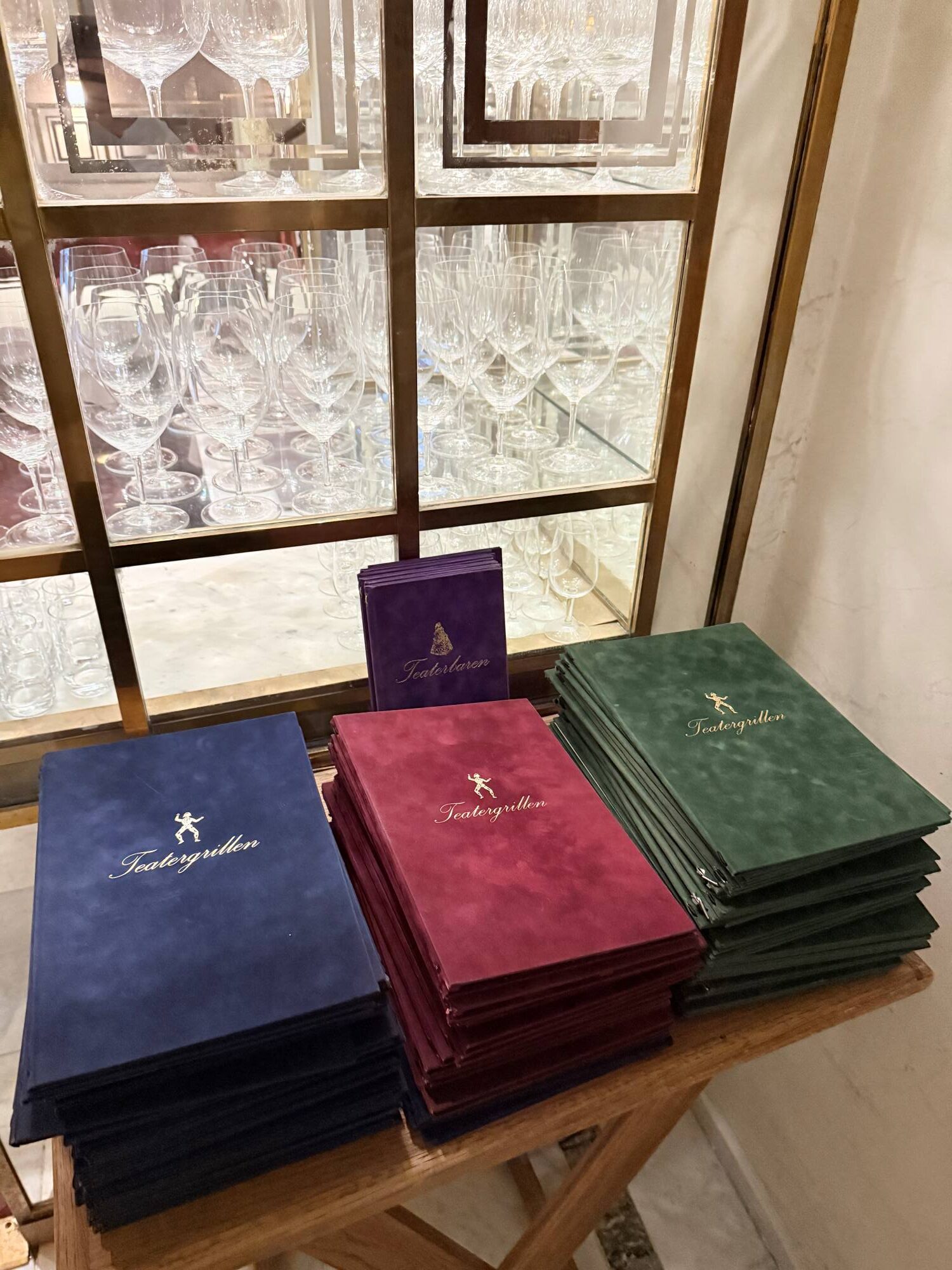

Teatergrillen
Nybrogatan 3
114 34 Stockholm
Hours:
Monday/Tuesday: 11:30 am–3 pm, 5–11 pm
Wednesday/Thursday: 11:30 am–3 pm, 5 pm–midnight
Friday: 11:30 am–3 pm, 5 pm–1 am
Saturday: 5 pm–1 am
In collaboration with Calle Carboni
Emily Sundblad’s exhibition Crayfish Theater is co-organized with Stockholm’s iconic restaurant Teatergrillen, which celebrates its eightieth anniversary in 2025. A favored dining venue of Ingmar Bergman and closely tied to the nearby Royal Dramatic Theatre, Teatergrillen has long been a landmark in Sweden’s cultural life.
The exhibition presents eight paintings that contemplate Sweden’s beloved kräftskiva (crayfish party). This annual August festivity—cracking shells, aquavit toasts, and drinking songs—marks summer’s waning days with communal joy and ritual. In Sundblad’s hands, the crayfish becomes muse, memory, and emblem of fleeting time, turning tradition into both subject and stage. The crayfish party becomes both a literal and a metaphorical framework for the exhibition. Sundblad’s exploration delves into themes of tradition, collective memory, and the ephemeral nature of seasonal celebrations. By integrating these motifs, the show reflects not only on Swedish culinary culture, but also on the broader interplay between art, ritual, and social cohesion.
The exhibition unfolds in three movements, like acts in a play. In the first, Vampyr I (Embrace) and Vampyr II (Embrace) present figures locked in embrace, perhaps shadows of Bergman’s Fanny and Alexander (1982) and Persona (1966)—two films where the boundaries between family, identity, and performance blur. Yet just as easily they might speak to other, more private dramas: the silent choreographies of intimacy, gestures charged with longing or estrangement, moments of closeness both tender and inscrutable, where affection blurs into enigma and the line between embrace and entanglement is never entirely clear.
The second group turns toward the stage: Pantalone, Isabella, and Pulcinella—three variations on the fragile glass clowns that already populate Teatergrillen, part of its peculiar decor and half-forgotten charm. Sundblad reimagines these figures as echoes of the Italian commedia dell’arte. Each one carries a plume of pink feathers—an irreverent nod to the crayfish feast, and a playful wink at theater’s mingling of tragedy and comedy. In doing so, she transforms the restaurant itself into a collaborator, drawing its history and objects into the performance of the exhibition.
The final act brims with exuberance: Kräftvampyr I, Kräftvampyr II, and Kräftparadiset —three canvases where crayfish drift into dream, guiding Sundblad’s figures through surreal landscapes of collage and memory. Half-myth, half-masque, these works unravel into a world where revelry becomes ritual, and ritual dissolves into vision.
By choosing Teatergrillen—neither white cube nor celebrated institution—Sundblad sidesteps solemnity. Instead, she roots her work in local tradition, in her own upbringing that included frequent visits to this very restaurant, and in the legendary place Teatergrillen holds within Stockholm’s artistic history. The exhibition becomes not only a display of paintings, but an act of remembrance, festivity, and life.
Teatergrillen
Nybrogatan 3
114 34 Stockholm
Hours:
Monday/Tuesday: 11:30 am–3 pm, 5–11 pm
Wednesday/Thursday: 11:30 am–3 pm, 5 pm–midnight
Friday: 11:30 am–3 pm, 5 pm–1 am
Saturday: 5 pm–1 am
In collaboration with Calle Carboni
Emily Sundblad’s exhibition Crayfish Theater is co-organized with Stockholm’s iconic restaurant Teatergrillen, which celebrates its eightieth anniversary in 2025. A favored dining venue of Ingmar Bergman and closely tied to the nearby Royal Dramatic Theatre, Teatergrillen has long been a landmark in Sweden’s cultural life.
The exhibition presents eight paintings that contemplate Sweden’s beloved kräftskiva (crayfish party). This annual August festivity—cracking shells, aquavit toasts, and drinking songs—marks summer’s waning days with communal joy and ritual. In Sundblad’s hands, the crayfish becomes muse, memory, and emblem of fleeting time, turning tradition into both subject and stage. The crayfish party becomes both a literal and a metaphorical framework for the exhibition. Sundblad’s exploration delves into themes of tradition, collective memory, and the ephemeral nature of seasonal celebrations. By integrating these motifs, the show reflects not only on Swedish culinary culture, but also on the broader interplay between art, ritual, and social cohesion.
The exhibition unfolds in three movements, like acts in a play. In the first, Vampyr I (Embrace) and Vampyr II (Embrace) present figures locked in embrace, perhaps shadows of Bergman’s Fanny and Alexander (1982) and Persona (1966)—two films where the boundaries between family, identity, and performance blur. Yet just as easily they might speak to other, more private dramas: the silent choreographies of intimacy, gestures charged with longing or estrangement, moments of closeness both tender and inscrutable, where affection blurs into enigma and the line between embrace and entanglement is never entirely clear.
The second group turns toward the stage: Pantalone, Isabella, and Pulcinella—three variations on the fragile glass clowns that already populate Teatergrillen, part of its peculiar decor and half-forgotten charm. Sundblad reimagines these figures as echoes of the Italian commedia dell’arte. Each one carries a plume of pink feathers—an irreverent nod to the crayfish feast, and a playful wink at theater’s mingling of tragedy and comedy. In doing so, she transforms the restaurant itself into a collaborator, drawing its history and objects into the performance of the exhibition.
The final act brims with exuberance: Kräftvampyr I, Kräftvampyr II, and Kräftparadiset —three canvases where crayfish drift into dream, guiding Sundblad’s figures through surreal landscapes of collage and memory. Half-myth, half-masque, these works unravel into a world where revelry becomes ritual, and ritual dissolves into vision.
By choosing Teatergrillen—neither white cube nor celebrated institution—Sundblad sidesteps solemnity. Instead, she roots her work in local tradition, in her own upbringing that included frequent visits to this very restaurant, and in the legendary place Teatergrillen holds within Stockholm’s artistic history. The exhibition becomes not only a display of paintings, but an act of remembrance, festivity, and life.
Teatergrillen
Nybrogatan 3
114 34 Stockholm
Hours:
Monday/Tuesday: 11:30 am–3 pm, 5–11 pm
Wednesday/Thursday: 11:30 am–3 pm, 5 pm–midnight
Friday: 11:30 am–3 pm, 5 pm–1 am
Saturday: 5 pm–1 am
In collaboration with Calle Carboni
Emily Sundblad’s exhibition Crayfish Theater is co-organized with Stockholm’s iconic restaurant Teatergrillen, which celebrates its eightieth anniversary in 2025. A favored dining venue of Ingmar Bergman and closely tied to the nearby Royal Dramatic Theatre, Teatergrillen has long been a landmark in Sweden’s cultural life.
The exhibition presents eight paintings that contemplate Sweden’s beloved kräftskiva (crayfish party). This annual August festivity—cracking shells, aquavit toasts, and drinking songs—marks summer’s waning days with communal joy and ritual. In Sundblad’s hands, the crayfish becomes muse, memory, and emblem of fleeting time, turning tradition into both subject and stage. The crayfish party becomes both a literal and a metaphorical framework for the exhibition. Sundblad’s exploration delves into themes of tradition, collective memory, and the ephemeral nature of seasonal celebrations. By integrating these motifs, the show reflects not only on Swedish culinary culture, but also on the broader interplay between art, ritual, and social cohesion.
The exhibition unfolds in three movements, like acts in a play. In the first, Vampyr I (Embrace) and Vampyr II (Embrace) present figures locked in embrace, perhaps shadows of Bergman’s Fanny and Alexander (1982) and Persona (1966)—two films where the boundaries between family, identity, and performance blur. Yet just as easily they might speak to other, more private dramas: the silent choreographies of intimacy, gestures charged with longing or estrangement, moments of closeness both tender and inscrutable, where affection blurs into enigma and the line between embrace and entanglement is never entirely clear.
The second group turns toward the stage: Pantalone, Isabella, and Pulcinella—three variations on the fragile glass clowns that already populate Teatergrillen, part of its peculiar decor and half-forgotten charm. Sundblad reimagines these figures as echoes of the Italian commedia dell’arte. Each one carries a plume of pink feathers—an irreverent nod to the crayfish feast, and a playful wink at theater’s mingling of tragedy and comedy. In doing so, she transforms the restaurant itself into a collaborator, drawing its history and objects into the performance of the exhibition.
The final act brims with exuberance: Kräftvampyr I, Kräftvampyr II, and Kräftparadiset —three canvases where crayfish drift into dream, guiding Sundblad’s figures through surreal landscapes of collage and memory. Half-myth, half-masque, these works unravel into a world where revelry becomes ritual, and ritual dissolves into vision.
By choosing Teatergrillen—neither white cube nor celebrated institution—Sundblad sidesteps solemnity. Instead, she roots her work in local tradition, in her own upbringing that included frequent visits to this very restaurant, and in the legendary place Teatergrillen holds within Stockholm’s artistic history. The exhibition becomes not only a display of paintings, but an act of remembrance, festivity, and life.
Teatergrillen
Nybrogatan 3
114 34 Stockholm
Hours:
Monday/Tuesday: 11:30 am–3 pm, 5–11 pm
Wednesday/Thursday: 11:30 am–3 pm, 5 pm–midnight
Friday: 11:30 am–3 pm, 5 pm–1 am
Saturday: 5 pm–1 am
In collaboration with Calle Carboni
Emily Sundblad’s exhibition Crayfish Theater is co-organized with Stockholm’s iconic restaurant Teatergrillen, which celebrates its eightieth anniversary in 2025. A favored dining venue of Ingmar Bergman and closely tied to the nearby Royal Dramatic Theatre, Teatergrillen has long been a landmark in Sweden’s cultural life.
The exhibition presents eight paintings that contemplate Sweden’s beloved kräftskiva (crayfish party). This annual August festivity—cracking shells, aquavit toasts, and drinking songs—marks summer’s waning days with communal joy and ritual. In Sundblad’s hands, the crayfish becomes muse, memory, and emblem of fleeting time, turning tradition into both subject and stage. The crayfish party becomes both a literal and a metaphorical framework for the exhibition. Sundblad’s exploration delves into themes of tradition, collective memory, and the ephemeral nature of seasonal celebrations. By integrating these motifs, the show reflects not only on Swedish culinary culture, but also on the broader interplay between art, ritual, and social cohesion.
The exhibition unfolds in three movements, like acts in a play. In the first, Vampyr I (Embrace) and Vampyr II (Embrace) present figures locked in embrace, perhaps shadows of Bergman’s Fanny and Alexander (1982) and Persona (1966)—two films where the boundaries between family, identity, and performance blur. Yet just as easily they might speak to other, more private dramas: the silent choreographies of intimacy, gestures charged with longing or estrangement, moments of closeness both tender and inscrutable, where affection blurs into enigma and the line between embrace and entanglement is never entirely clear.
The second group turns toward the stage: Pantalone, Isabella, and Pulcinella—three variations on the fragile glass clowns that already populate Teatergrillen, part of its peculiar decor and half-forgotten charm. Sundblad reimagines these figures as echoes of the Italian commedia dell’arte. Each one carries a plume of pink feathers—an irreverent nod to the crayfish feast, and a playful wink at theater’s mingling of tragedy and comedy. In doing so, she transforms the restaurant itself into a collaborator, drawing its history and objects into the performance of the exhibition.
The final act brims with exuberance: Kräftvampyr I, Kräftvampyr II, and Kräftparadiset —three canvases where crayfish drift into dream, guiding Sundblad’s figures through surreal landscapes of collage and memory. Half-myth, half-masque, these works unravel into a world where revelry becomes ritual, and ritual dissolves into vision.
By choosing Teatergrillen—neither white cube nor celebrated institution—Sundblad sidesteps solemnity. Instead, she roots her work in local tradition, in her own upbringing that included frequent visits to this very restaurant, and in the legendary place Teatergrillen holds within Stockholm’s artistic history. The exhibition becomes not only a display of paintings, but an act of remembrance, festivity, and life.














Emily Sundblad
Vampyr I (Embrace)
2025
Oil on canvas
35 × 27 cm (13 3/4 × 10 5/8 in.)

Emily Sundblad
Vampyr II (Embrace)
2025
Oil on canvas
41 × 33 cm (16 1/8 × 13 in.)

Emily Sundblad
Pantalone
2025
Oil on canvas, feathers
65 × 46 cm (25 5/8 × 18 1/8 in.)

Emily Sundblad
Pulcinella
2025
Oil on canvas, feather
35 × 25 cm (13 3/4 × 9 7/8 in.)

Emily Sundblad
Isabella
2025
Oil on canvas, feathers
41 × 33 cm (16 1/8 × 13 in.)

Emily Sundblad
Kräftparadiset
2025
Oil on canvas
38 × 46 cm (15 × 18 in.)

Emily Sundblad
Kräftvampyr I
2025
Oil on canvas
46 × 38 cm (18 1/8 × 15 in.)

Emily Sundblad
Kräftvampyr II
2025
Oil on canvas
41 × 33 cm (16 1/8 × 13 in.)